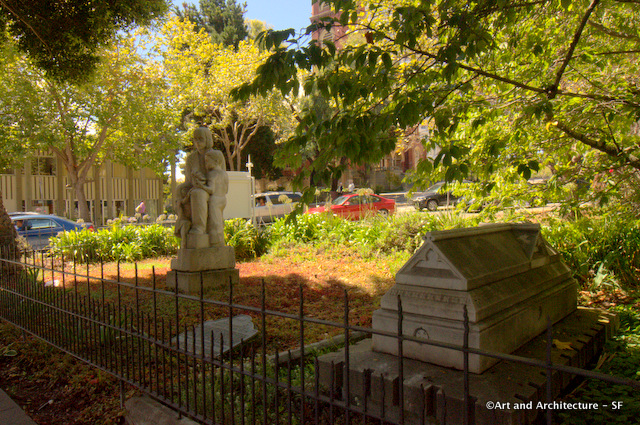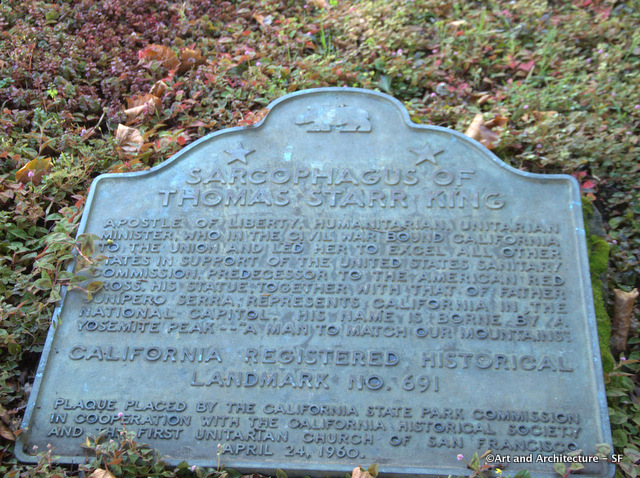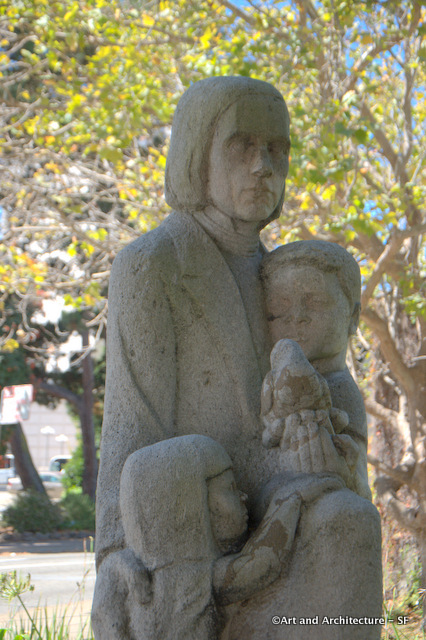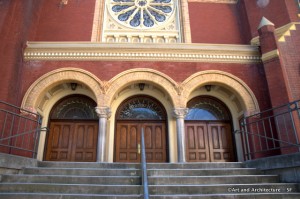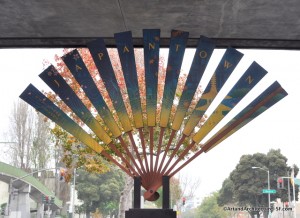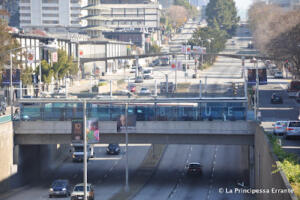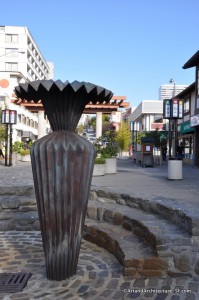Franklin between Starr King and Geary
Japantown/Western Addition/ Fillmore
Due to the lack of land their are very few bodies actually buried within the City of San Francisco. This is why the Sarcophogus of Thomas Starr King is so unusual.
Thomas Starr King, a young, inexperienced Unitarian minister, came to San Francisco in 1860 when the state was undergoing an intense political struggle to determine which side of the Civil War it would follow. In public speeches, up and down the state, King rallied against slavery and secession. Through his eloquence and the sheer strength of personality he is credited with shifting the balance and making California a Unionist state. In his oratories King prodded Abraham Lincoln to issue an emancipation proclamation well before it was actually enacted.
During the Civil War, King turned his energy to raising funds for the United States Sanitary Commission, which cared for wounded soldiers and was the predecessor to the American Red Cross. King personally raised over $1.5 million, one-fifth of the total contributions from all the states in the Union. Exhausted from his campaigning Thomas Starr King died in 1864 of pneumonia and diphtheria. He never lived to see the end of the war or the Union re-established. Today Union Square is still named for the pro-Union, abolitionist speeches that he delivered on that site. (From the Fog Bay Blog)
The sculpture was commissioned in 1954 by the San Francisco Unified School District to be installed at the new Starr King Elementary School. In 1965, the sculpture was damaged by vandals and repaired on site by the artist, Ruth Cravath. The sculpture was extensively damaged by vandals in 1970 and was removed to the artist’s studio for repair. Because of the history of vandalism to the sculpture, the newly repaired sculpture was given on long-term loan to the First Unitarian Church, where it was installed in 1978. Martin Rosse, architect for the First Unitarian Church, designed the base; and Sheedy Drayage served as the contractor during the 1978 installation.
Sarcophagus of Thomas Starr King
Apostle of liberty, humanitarian, Unitarian, minister, who in the Civil War bound California to the Union and led her to excel all other states in support of the United States Sanitary Commission, predecessor to the American Red Cross. His statue, together with that of Father Junipero Serra, represents California in the national capitol. His name is borne by a Yosemite peak. “A man to match our mountains.”
California Registered Historical Landmark No. 691
Plaque placed by the California State Park Commission in cooperation with the California Historical Society and the First Unitarian Church of San Francisco.
April 24, 1960
Ruth Cravath (1902-1986) has been in this website with a sculpture at the Forty-Niners Stadium. In 1965 she gave a wonderful interview to the Smithsonian, the history of the art world of San Francisco opens up so beautifully in her interview.
